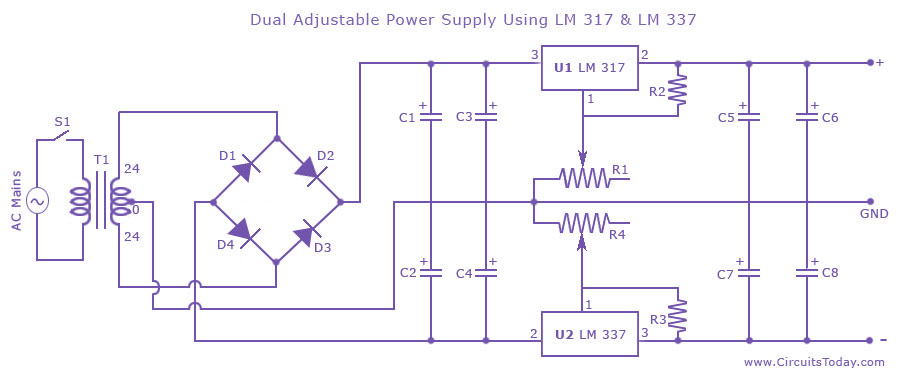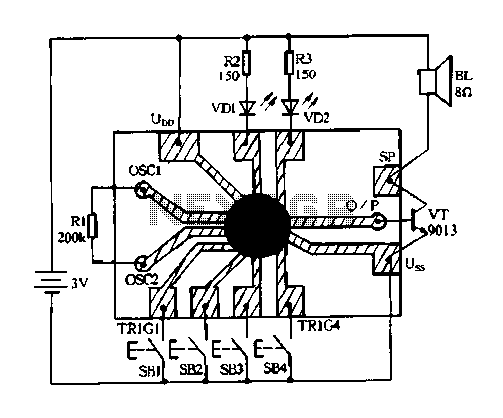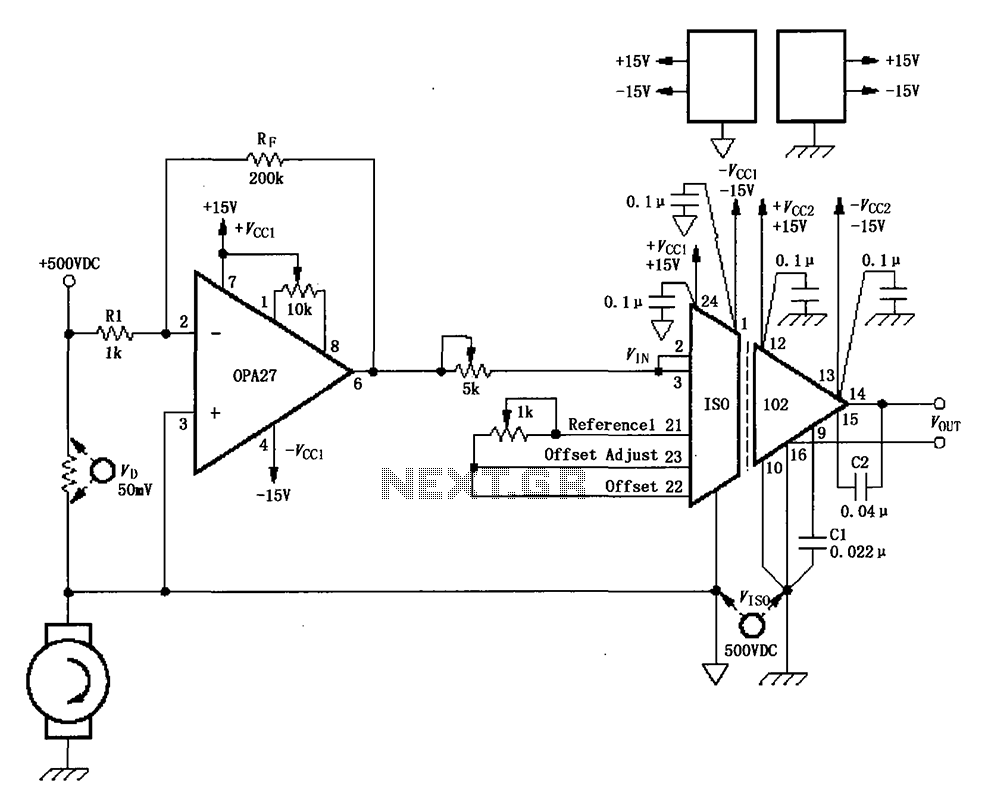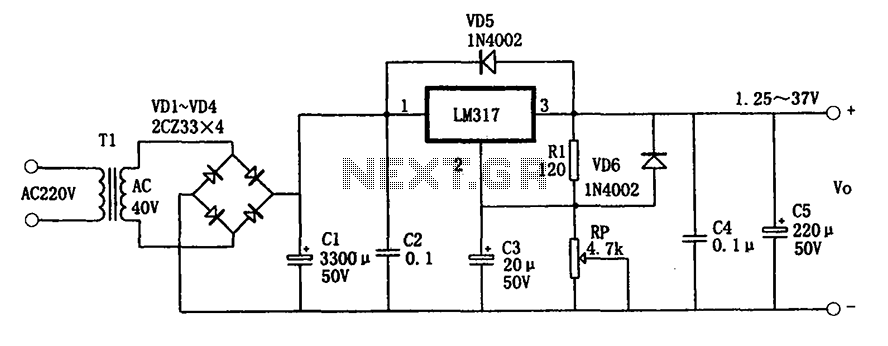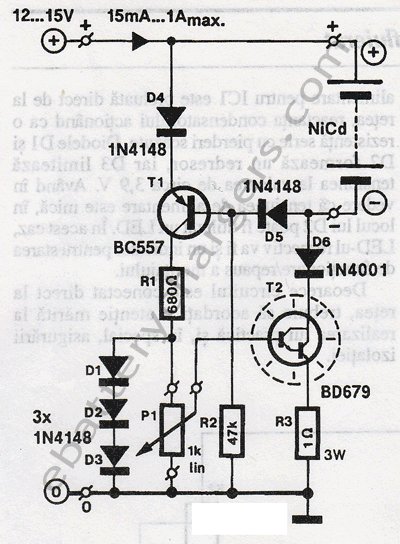
Ni-MH Ni-Cd Adjustable Constant Current Charger

Adjustable Constant Current Ni-Cd and Ni-MH Battery Charger Circuit. This circuit is designed to provide a constant current for charging Ni-MH or Ni-Cd batteries. A schematic diagram of the circuit is available.
The adjustable constant current battery charger circuit for Ni-Cd and Ni-MH batteries is a critical component in battery management systems. The circuit is designed to ensure that batteries are charged efficiently and safely, maintaining the optimal charge current to prolong battery life and prevent damage due to overcharging.
The core of the circuit typically includes a voltage regulator or an operational amplifier configured to regulate the output current. The adjustable feature allows the user to set the desired charging current based on the specifications of the battery being charged. This is commonly achieved using a variable resistor (potentiometer) in conjunction with feedback from the output current.
In addition to the current regulation, the circuit may include protection features such as thermal cutoff, reverse polarity protection, and overvoltage protection to enhance safety during the charging process. The schematic diagram usually illustrates the connections between the power source, the control circuitry, and the battery terminals.
Key components often found in such circuits include transistors or MOSFETs for switching, resistors to set the current levels, and capacitors for filtering and stability. The output current can be monitored using an ammeter or through feedback to the control circuit to ensure that the charging process remains within the desired parameters.
Overall, this adjustable constant current charger circuit is essential for maintaining the health and performance of Ni-Cd and Ni-MH batteries, making it suitable for various applications, including consumer electronics, power tools, and other rechargeable battery systems.Ni-Cd Ni-MH Adjustable Constant Current Battery Charger Circuit This is a Adjustable Constant Current Ni-MH or Ni-Cd battery charger circuit. It can be used to get a constant current power supply. Here is the schematic diagram of the circu.. 🔗 External reference
The adjustable constant current battery charger circuit for Ni-Cd and Ni-MH batteries is a critical component in battery management systems. The circuit is designed to ensure that batteries are charged efficiently and safely, maintaining the optimal charge current to prolong battery life and prevent damage due to overcharging.
The core of the circuit typically includes a voltage regulator or an operational amplifier configured to regulate the output current. The adjustable feature allows the user to set the desired charging current based on the specifications of the battery being charged. This is commonly achieved using a variable resistor (potentiometer) in conjunction with feedback from the output current.
In addition to the current regulation, the circuit may include protection features such as thermal cutoff, reverse polarity protection, and overvoltage protection to enhance safety during the charging process. The schematic diagram usually illustrates the connections between the power source, the control circuitry, and the battery terminals.
Key components often found in such circuits include transistors or MOSFETs for switching, resistors to set the current levels, and capacitors for filtering and stability. The output current can be monitored using an ammeter or through feedback to the control circuit to ensure that the charging process remains within the desired parameters.
Overall, this adjustable constant current charger circuit is essential for maintaining the health and performance of Ni-Cd and Ni-MH batteries, making it suitable for various applications, including consumer electronics, power tools, and other rechargeable battery systems.Ni-Cd Ni-MH Adjustable Constant Current Battery Charger Circuit This is a Adjustable Constant Current Ni-MH or Ni-Cd battery charger circuit. It can be used to get a constant current power supply. Here is the schematic diagram of the circu.. 🔗 External reference
